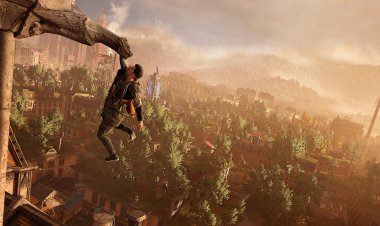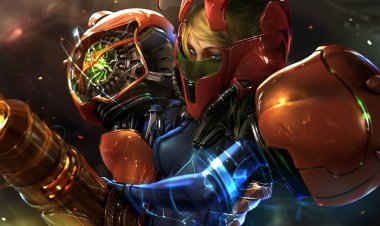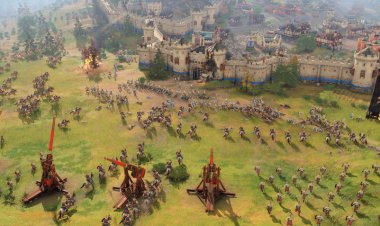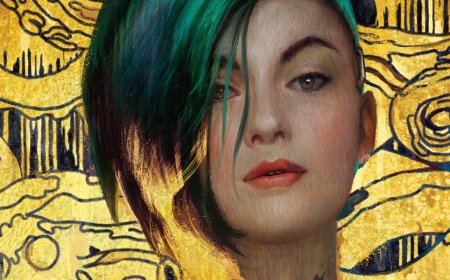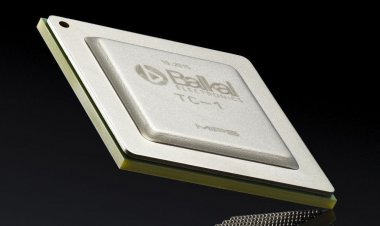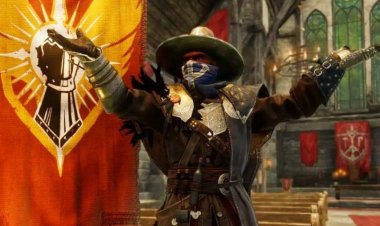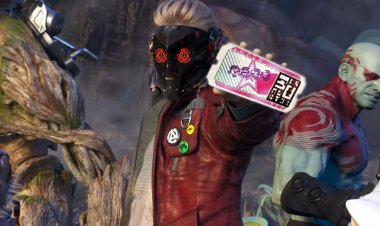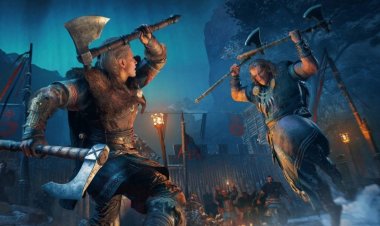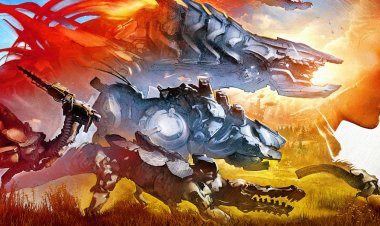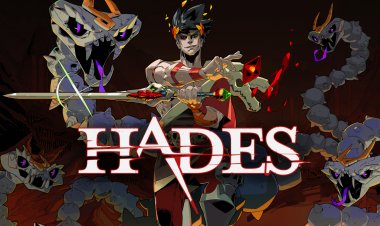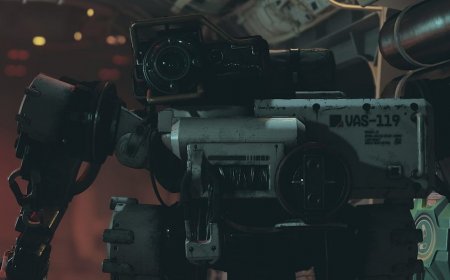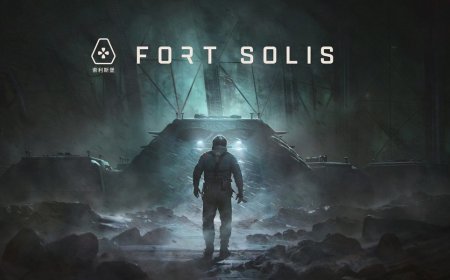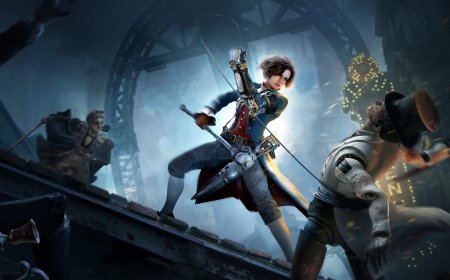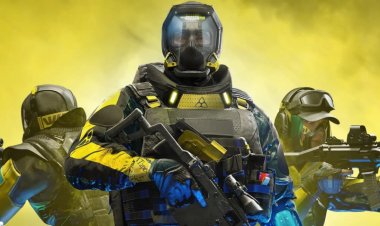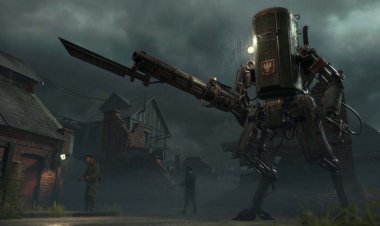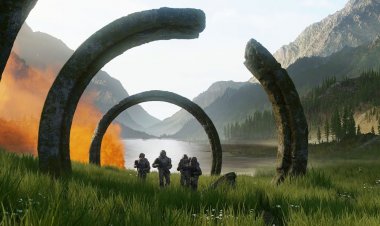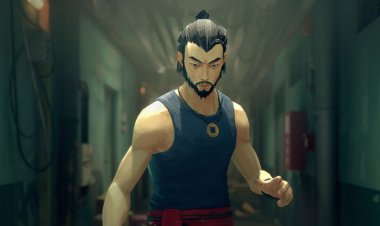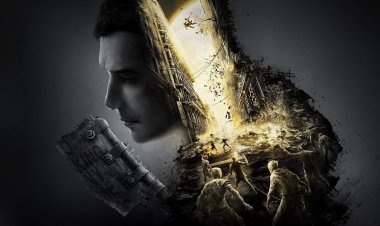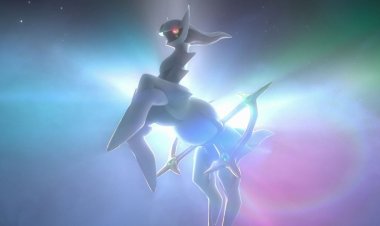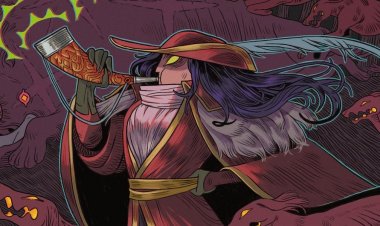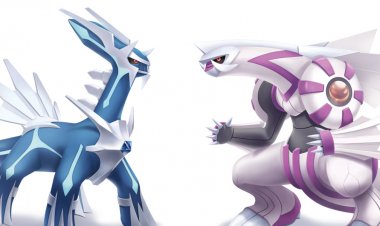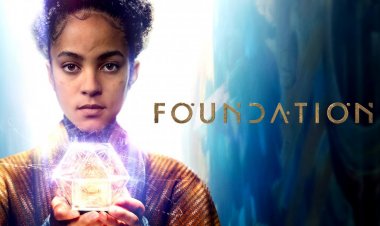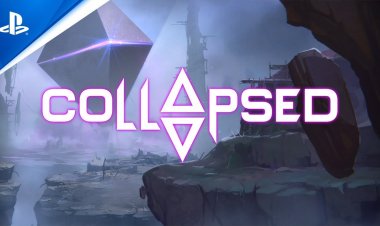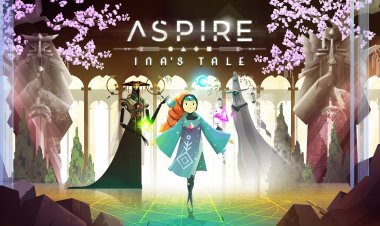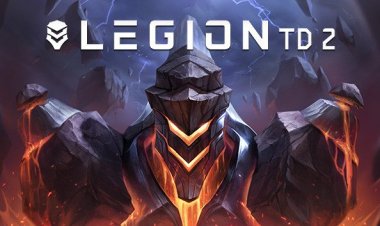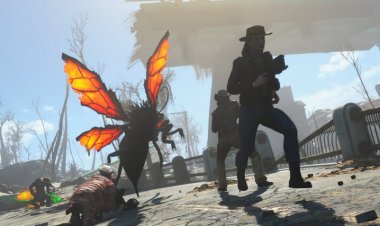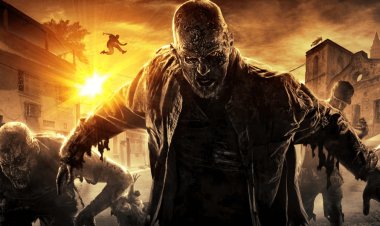Famicom Detective Club: The Missing Heir & The Girl Who Stands Behind - Review
Have you ever wondered what attracts people to the detective genre the most? It seems to us that it is based on an intrigue that persists throughout the work, the core of which is unpredictability.

Nothing tickles our senses more than sudden incidents on the way to approaching the truth.
Nintendo's Famicom Detective Club series of visual novels, the first screenplay by Metroid creator Yoshio Sakamoto, has been a mystery to Western audiences for 30 years. Thanks to the efforts of the Japanese company Mages, acting under the supervision of key employees of the platformer responsible for the original works, we received a remake of two games from the eighties on Switch, which we will consider today.
To the casual eye of a gamer who is experienced in the non-linear narrative of modern visual novels, the absence of roots in the Famicom Detective Club may seem like a miscalculation of the developers, but in fact it's the opposite. Otherwise, the narrative would not work, and the storyline would not seem complete. After all, in the end, it is the absence of grand pianos from the bushes and the strong presentation of the plot that characterize a high-quality detective story.
In Europe, both Famicom Detective Clubs are sold in one set, and you are free to choose which one to start your journey with. But we recommend going through them in the order of the originals ' output. First – The Missing Heir, and then The Girl Who Stands Behind. You will understand the meaning of these lines below, but in general we mean a smoother passage due to some gameplay and plot circumstances. The second aspect is extremely important, since you actually get a part of the spoiler about the main characters and an important event.
The chapter about the lost heir is a classic story about an undivided inheritance, human vices and ancient legends. And it's amazing how brilliant it turns out to be in the end, the move with one of the main cliches-the amnesia of the miracle of the surviving protagonist at the beginning of the storyline. Given the fact that the main character is the player's guide, the developers immediately suggest giving him a name, which will better associate you with the adventure and allow you to immerse yourself more in what is happening.
In the course of the passage, we return the memories of the hero, revealing all the new unexpected details of the investigation. In the "Detective Club" there are no useless elements – everything that happens makes sense and ultimately works as a single interconnected mechanism to make up the overall picture of the crime step by step, correctly leading to the denouement.
Helping players in difficult cases is the caring Ayumi, an assistant from the private detective agency Utsugi, in which the hero not only works, but also in fact lives. Led by a clue that someone urgently called him to the cliff, under which he eventually woke up without memory, the protagonist goes to the village of Ayashiro, where he is repeatedly invited to help. There we find ourselves in the estate of the eponymous rich family, whose roots go far back in history. The anxious butler, who greets us cordially, tells us about the accident and the reasons for the request to take up the case. And here begins a full-fledged investigation, the purpose of which is to find the missing heir of the Ayashiro family, where you will have to embark on all the hard lives of a detective. The rest of the family, including the maid, are not so friendly and talkative, so it's time to get to work.
As you may have guessed, we will dive deeper into the atmosphere of the rural hinterland, where we will encounter both myths and folk beliefs, as well as historical discourses from several centuries ago about the origin of the family and the legend of its hidden power. But this is not the only location where the estate is presented with rooms and outbuildings, as well as a clinic, a railway station, a forest thicket, a cemetery, and a temple. In addition to the previously mentioned cliff and agency, on duty we will also go to a firm owned by an influential family, and even – on a special occasion-to a provincial town.
Together with the stunning sound of the environment, pleasant music, animated graphics and full Japanese voice acting of all the characters, the game vividly conveys the effect of presence in a dark, surreal, but at the same time beautiful atmosphere. At the same time, the Famicom Detective Club: The Missing Heir doesn't dump tons of text on the player for no apparent reason. The narrative is very consistently structured and divided into chapters, during which we solve local problems. After the closure of the next round of the investigation, another part of the global puzzle is formed in front of us. But new questions constantly arise, the disclosure of which will have to be dealt with in subsequent acts. There are a lot of characters to interact with in the game, but not so many that you can get confused and lose touch.
Since this is certainly an important point, the authors have provided a diary in the game, where all the actors are listed and detailed information about each of them, theses structured. And this is not only a banal name, age and place of employment, but also connections with each other, as well as incidents that are replenished as they pass according to the events. This is your working tool in the truest sense of the word – the background of the characters is closely related to their role in the plot and will repeatedly allow you to connect the threads of clues together in their motive, giving the case a course.

Oddly enough, the gameplay always works here, except for rare cutscenes that demonstrate important events, such as arriving at a new location, a long retelling of significant moments, or, of course, murder and harassment.
When the hero is face to face with the interlocutor, a menu with commands appears on the left in the form of an improvised scroll. The "Talk" option opens access to a drop-down list of topics for conversations-from the name of the character and alibi to the location, case, and other things. Depending on the context, you need to choose the appropriate options for questions. Most often, you have to go through all the options, probing the ground for a special response, which can be understood by the emotions on your face or awkward phrases. Sometimes you have to beat out information, touching on vulnerable topics over and over again, revealing all the new details. Some characters are difficult to force to reveal all the cards at once. Someone gets annoyed and goes into himself, someone simply does not remember or lies, and some politely send far away or even disappear after a short meeting. If at the moment there are two or more interlocutors nearby, then an additional option “call " appears, allowing you to switch between the actors. At such moments, the hero sometimes moves to another location or turns to the side, which leads to a change in the screen.
The "View / Check" option allows you to explore all the objects in the room using the cursor on the screen in front of you. So that this does not come down to infuriating pixelhunting, the game kindly highlights valuable items with flashes, and also signs objects about which you can get a voiced comment from the protagonist. By drawing conclusions that are relevant to the case, we learn a new piece of the puzzle of history that can be used to figure out the right witness, look at the case from a different angle, use a thing or visit a place. An interesting fact, but in the game you seem to actually get closer to people and get closer – this is expressed both visually with the help of sounds and animations, and in dialogues. The characters will ask you why you are so staring, where you are going, or stop you from touching the objects that are important to them.
The ability to show something appears at certain moments, when you get a thing with which to actually identify a person or event. Usually it is a photo or some key subject in the case. Menu Bar “Open " or "Take" refers to values that can be carefully considered and studied. The hero can also open doors and use landlines – there is no mobile connection in the Famicom Detective Club, and this is the only way to quickly transmit information remotely.
Sometimes you need to push yourself to remember some key details – here it helps to " Remember” what the witnesses said, was somewhere or something in your hands that can help advance the investigation.
Fed up with the latest information and all the alterations that we got into-you need to carefully digest everything and make balanced conclusions about the work done. The “Make assumptions " option appears at the end of each day when you get home. Summing up what happened allows you not only not to lose the thread of the story, but also to realize the progress that opens the way to further action. Sometimes, to make a decision, you need to finish a thought when the on-screen keyboard appears and the game prompts you to enter a new word, based on the available facts. If your memory fails you, do not despair – it's time to use the diary. By the way, to keep your memory in good shape in case of long breaks, you will be offered to listen to a brief synopsis of all the events on the agenda at each download. If desired, you can even scroll through the history of the dialogues within your game session.
The option to move between locations is sometimes available immediately, but often the game does not allow you to move to another zone until you complete all the dialogues or try all the possible interactive options on the screen. Sometimes the most unobvious option may be the right one – for example, to interview local residents or passers-by on arrival at a new point.
In the game, all the mechanics work together, so it is important to remember that at the right moment, you will have the opportunity to show an object, turn to another character, or put your thoughts in order to give the investigation a go.
Of course, it would be boring to follow a story that runs evenly, so be prepared for twists and cliffhangers in each chapter. The story will pleasantly surprise even sophisticated players and fans of detective works. Over time, you will get answers to all the questions, but not immediately, so it is always interesting to compare your own conclusions with what you will learn as the actions progress. We can't go into the details of the story, as this is a critical component for a story-oriented game, especially in the genre of short stories, but we note that the last chapters add powerfully to the dynamics. At the very end, the authors will impress with an unusual Famicom Detective Club gameplay block-short, but memorable. When you think that the atmosphere is conveyed carefully enough, the developers go further and like a bolt from the blue introduce a new element, and to match the entourage.
The second part of the Famicom Detective Club, " The Girl Standing Behind”, is essentially a prequel. It is here that the protagonist meets Detective Utsugi, who recognizes his potential, hires him and allows him to stay close to him due to circumstances. The final scenes precede " The Lost Heir”, but about everything in order.
If in the tale of the heirs we witnessed the myths about the ancestral curse, then here the screenwriters offer to dive into the urban legend of a dead girl watching you in the dark from behind. Instead of a provincial mansion, the main setting becomes the high school and its surroundings, as well as several areas of the city.
The authors tried to diversify the game, so they changed not only the setting, but also the tone of the narrative, leaving the same structure of the narrative with chapters and conclusions at the end of each. Having been in the last part of the investigation of the murder chain, here we are more engaged in an excursion into an old unsolved case, which is closely related to the current one. Gradually removing the shroud of mystery, the hero pulls out all the ins and outs of the secretive characters in order to finally dispel the myth and bring to light the selfish people. This is a rather dark and sad story, where everything is not as transparent as it seems at first glance. In order not to indulge in sadness at all, the authors dilute the game with humor a little more than in the previous game, and even introduce another assistant-seemingly a typical Japanese gopnik Hitomi, who is actually a deeply caring guy. Ayumi's school friend occasionally helps out closer to the plot's climax and is one of the important witnesses, so his appearance doesn't seem made for show. He will even be able to stir up one uncooperative character. And in general, it is a pleasant refreshing atmosphere, because you have to communicate a lot, and here the world of the game seems more lively and natural with all these night alcoholics, barkers and cabaret bar workers.
For visual novels, the soundtrack becomes a very important element, and both Famicom Detective Clubs are strikingly different from the originals in this regard. There is a full voice-over of the entire text. All the comments and responses of the main character in the scenes were also affected. Actors, as is typical of the Japanese artistic nature, all as a selection and vividly express their emotions to the best of the specifics of each character. The elderly doctor groans sweetly and goes beyond the limits in the discussion of beautiful women, the lawyer's secretary tries to get rid of the meticulous detective as soon as possible, and the police calmly rake out the facts. Against the background, the wind howls, you can hear the murmur of water, the noise of the street, the sound of the TV and other phenomena, which makes it great to feel the place. Music makes an additional contribution to creating the right mood. It was not without cinematic tense melodies, and drum rolls in the appropriate environment. In the bar, we hear the soothing lounge, and in the estate, our ears are caressed by the pompous classical opera, emphasizing the status of the place. At any time of the game, you can switch between classical and modern variations of the musical accompaniment.
Another innovation of the remake of the Famicom Detective Club dilogy, of course, is the graphic component, drawn from scratch. The authors tried to make the picture modern, preserving the style. Of course, the art design is significantly different from the original with more humanized facial features and narrow body contours inherent in the anime culture of the 80s and 90s. However, here we did not depart from the principles-the absence of fancy elements in the picture and an excessively rich range of images. The most serious display of locations without piling up unnecessary details and characters, where all the physiological disadvantages and advantages are evident, allowing you to determine the approximate age and employment of the characters. Quite cool, the artists also managed to convey a sense of the passage of time – when it is dark, the image is unevenly shaded in places where there is less light, and at sunset there is a characteristic purple, which is reflected on the objects studied by the hero, well, in the morning the active sun brightly fills everything in the area. We seem to live day after day with the heroes. The pastel colors of the visual component also work in conjunction with the other elements, turning the game into a kind of autobiographical sketch from the difficult, but rich in adventure life of a detective.
The animation of the characters that makes the Famicom Detective Club stand out against the background of the mass of novels with static pictures is really spectacular. The whole range of emotions of the interlocutors - from surprise and disappointment to joy, anger and shock-together with the movements of their bodies make everything they say much more convincing. Watching the metamorphoses of certain personalities at turning points is pure pleasure. Among other things, the authors sometimes resort to using short background animations, where something may appear and head towards us, or inserts with more detailed shots of important events or objects.
For users who are not familiar with the genre, we emphasize: the specifics of visual novels imply the need to read a lot – read and listen. There is no non-stop action, shooting and explosions. The disadvantage for some may be the lack of an English-language audio track.
In Europe, Famicom Detective Club: The Missing Heir and The Famicom Detective Club: The Girl Who Stands Behind will go on sale as a single set in digital format only on the eShop site on May 14. Owners of American Nintendo accounts can buy both games separately, and in Japan there will also be a collector's physical edition with both parts.
Modern remakes of Famicom Detective Club allow you to touch the cult Japanese classics of Nintendo, which many Western gamers have not even heard of, and this pleases. We hope that the company will continue to resurrect old franchises with the same diligence.

Famicom Detective Club does not let go from the first moments to the last seconds, tenaciously dragging even the most corrosive gurus of detective adventures into its possession. The well-coordinated mechanism of all elements enhances the gloomy atmosphere of the murder series, the player's kinship with the living characters. This, in turn, makes each visit exciting, causing the desire to return to the story again and again, imagining with interest what will happen next.
Famicom Detective Club: The Missing Hare and Famicom Detective Club: The Girl Who Stands Behind will be released in Europe and Russia with Japanese voice acting and English subtitles.






What's Your Reaction?













